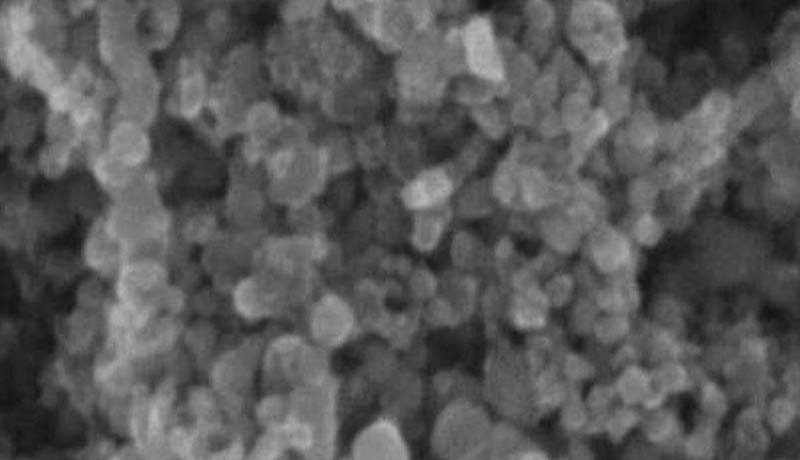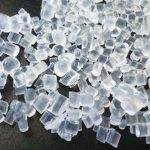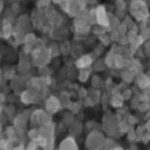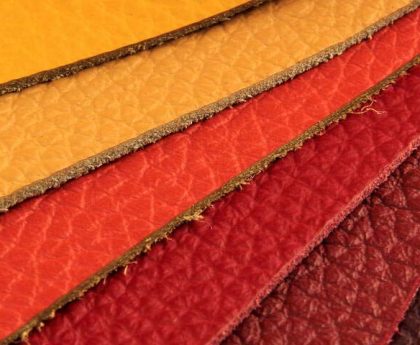In the field of new energy materials, carbon coating is the most common material modification method. Carbon coating of materials can improve the electrical conductivity of materials on the one hand and provide stable chemical and electrochemical reaction interfaces on the other hand. Therefore, how to do effective carbon coating is particularly important. Below we list some standard organic carbon source carbon coating methods.
1 Polydopamine coating method
Dopamine is a neurotransmitter, a chemical used to help cells transmit impulses.
In 2007, Messersmith published an article in Science [1] and found that when dopamine (DA) is exposed to air under weak alkaline conditions (pH 8.5), it can polymerize on almost any solid surface and form polydopamine (PDA) nanofilms.
Therefore, WE can use PDA to coat the material, and then the PDA-coated material can be calcined in an inert atmosphere to obtain a carbon-coated material.
In 2018, Professor Wu Hao from the School of Materials Science and Engineering of Sichuan University published a paper entitled Tailoring yolk–shell FeP@carbon nanoboxes with engineered void space for pseudocapacitance-boosted lithium storage in Inorganic Chemistry Frontiers. [2]
In this paper, the author used polydopamine to coat square ferric oxide and then calcined in an Ar gas atmosphere to obtain carbon-coated ferric oxide.
The biggest advantage of polydopamine coating is that it can self-aggregate on the surface of almost any material, so it can be used to coat most materials. However, its disadvantage is that the coating environment is weakly alkaline (pH=8.5), so if the material is not suitable to exist in this environment, but cannot use this method for coating. In general, the thickness of the carbon layer converted into polydopamine coating is 20-40 nm. In addition, the carbon layer converted from polydopamine is N-doped carbon, and the N atom is derived from the amino group of dopamine. Due to the high dopamine price, this method is also unsuitable for large-scale production.
2 Resorcinol-formaldehyde resin coating method
The resorcinol-formaldehyde resin coating method is realized by the bulk polycondensation reaction of resorcinol and formaldehyde. It is widely used for the cladding of silicon-based materials.
In 2013, Prof. Qisheng Huo from the State Key Laboratory of Inorganic Synthesis and Preparative Chemistry, School of Chemistry, Jilin University published an article entitled “A versatile cooperative template-directed coating method to construct uniform microporous carbon shells for multifunctional core–shell nanocomposites” at nanoscale. Reference [3] details using the resorcinol-formaldehyde resin coating method to coat functional materials with different surface properties. After the reaction is completed, it will form a uniform polymer film on the material’s surface. By calcining in an inert atmosphere, We can obtain a carbon layer with a microporous structure.
The method is simple, has high repeatability, is suitable for scale-up, adjusts the concentration of reactants and reaction time, and the obtained carbon layer can range from tens of nanometers to hundreds of nanometers. However, it should be noted that both resorcinol and formaldehyde are carcinogens, and special attention should be paid when using them.
3 Sugar (glucose, sucrose, etc.) coating method
Many carbohydrate organic carbon sources include glucose, sucrose, fructose, cellulose and starch. The use of sugars as organic carbon sources to protect materials is also a particularly common approach. Usually, there are two technical routes. One is to first perform a hydrothermal reaction between sugar and material to polymerize the sugar on the material’s surface, and then perform high-temperature carbonization in an inert atmosphere to convert the polymer into carbon. Another method is to mix sugar and materials uniformly by ball milling, etc., then dry, and finally carbonize at high temperature in an inert atmosphere to obtain carbon.
In 2017, Professor Liu Heng from the School of Materials Science and Engineering of Sichuan University published a paper entitled Ultrafast and Durable Lithium Storage Enabled by Porous Bowl-Like LiFePO4/C Composite with Na+ Doping in chemelectrochem. [4] In this article, the author uniformly mixed iron phosphate, lithium hydroxide and glucose by ball milling, then granulated by spray drying, and finally calcined in nitrogen atmosphere to prepare carbon coating of LiFePO4, as shown in Figure 5 below. In the carbon coating performed in this way, the carbon layer coating is uniform and the thickness is about 2 nm. In addition to the carbon on the material’s surface, the glucose-converted carbon interconnects the primary particles to form a large secondary particle.
Saccharide coating is a very common method for carbon coating in the laboratory. At the same time, it is also the longest-used method in the industry, largely because it is cheap. However, the carbon layer converted from the sugar coating is usually relatively thin.
4 Polyvinylpyrrolidone (PVP) coating method
Polyvinyl pyrrolidone (PVP for short) is a non-ionic polymer compound. It is easily soluble in water and most organic solvents, with low toxicity and good biocompatibility. PVP is divided into four grades according to its average molecular weight, usually expressed by K value. Usually, the larger the K value, the higher the viscosity and the stronger the adhesiveness. It is often used as a polymer surfactant.
In 2017, Guihua Yu from the Department of Materials Science and Engineering and the Department of Mechanical Engineering of the University of Texas at Austin published an article entitled A Conductive Molecular Framework Derived Li2S/N, P Codoped Carbon Cathode for Advanced Lithium-Sulfur Batteries in Advanced energy materials ‘s article. [5] In this study, the author dissolved lithium sulfate and pvp together in alcohol, then completely evaporated the alcohol, and finally calcined the material at 600 °C to obtain the Li2SO4/C material.
The carbon coating method using pvp is also straightforward, and since PVP also contains N element, the resulting carbon layer is nitrogen-doped carbon. By adjusting the amount of PVP and material:
The thickness of the final carbon layer can vary from a few nanometers to tens of nanometers;
Pvp not only forms a carbon layer on the material’s surface, but also forms a carbon network to connect the dispersed materials, forming Conductive networks in 2D and 3D.
5 Tannin coating
Tannic acid, also known as tannic acid, is a plant polyphenol soluble in water and ethanol. In industry, tannic acid is widely used in tanning leather and making blue ink. It is widely sourced and can be extracted from tea, oak and sumac plants, making it less expensive. Similar to polydopamine coating, it instantly coats almost any material surface in a neutral buffer solution.
In 2016, Li Lei from the School of Chemistry and Chemical Engineering of Shanghai Jiao Tong University published an article entitled Core–shell nano-structured carbon composites based on tannic acid for lithium-ion batteries in the Journal of Materials Chemistry A. [6]
In this paper, the authors used tannic acid as an organic carbon source to coat electrode materials for the first time. The authors took Si and TiO2 particles as research objects and found that the controllable and uniform coating of the material can be achieved by tannic acid. However, the thickness of the tannin coating varies for different materials.
The characteristic of tannin coating is that its coating environment is under neutral conditions and can be coated on almost any material surface. The thickness of its coating can be precisely controlled, ranging from a few nanometers to tens of nanometers, and the cumulative coating can be carried out layer-by-layer.
There are many types of organic carbon sources. In addition to the most common carbon sources mentioned above, other carbon sources include: citric acid, polyvinyl alcohol, polypyrrole, vitamin C, polyethylene glycol, asphalt, anthracene, aniline, and many more. When using organic carbon sources to carbon coat materials, We should note the following points:
1) High-temperature treatment must be carried out in an inert atmosphere, otherwise, carbon will not be obtained due to oxidation;
2) Under normal circumstances, the higher the calcination temperature, the higher the degree of graphitization of carbon, and the better the conductivity;
3) Under normal circumstances (temperature below 1000 °C), it is difficult to convert organic carbon sources into graphitic carbon, usually in an amorphous state;
4) The organic carbon source has reducibility in the process of converting into carbon, which may reduce the coated material;
5) The amount of carbon coating is not as large as possible, too large will make the density of the composite material lighter and will also affect its performance;
6) The thickness of carbon coating has a suitable value; too thin or too thick is not good;
In short, it needs to decide whether to perform carbon coating and which organic carbon source to use for carbon coating according to your goals and the characteristics of each coating method.



